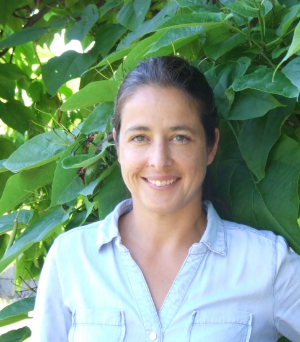Written by B. Sallato and I. Hanrahan, October 2022.
Growers are starting to harvest their WA 38 orchards, and while it is still early to talk about the overall quality of ‘WA 38’ for this 2022 challenging growing season, we want to share general observations, resources, and possible causes.
Harvest recommendations
Starch degradation of minimum 2.0 and breaking background color are the two main recommendations. Chlorophyll degradation and starch does not always go together, especially in young blocks or this year. An additional parameters of maturity is the creamy flesh color, that can be used as additional indicator.
Visit 2022 Commercial Harvest and Storage Criteria for WA 38 for harvest recommendation details, or revisit the article Developing a cv. WA 38 starch scale for the Washington State apple industry and the recent article 2022 Update: Additional WA 38 Harvest and Storage Considerations.
‘WA 38’ defect observations
Frost damage
Cracking in the calyx end of the apple with a circular pattern (Figure 1) is associated to cold damage during early flower development. This season we have seen several ‘WA 38’ orchards with higher incidence of calyx end cracking associated to frost damage, with various levels of severity. According to Proprietary Variety Management (PVM), fruit with mild symptoms (Figure 1, apple in the right) is accepted for packing, but severe cracking (open wounds) should be discarded (Figure 1, left).

In some cases, the higher severity was observed in the lower portion of the trees.

Frost damage has also been observed in other cultivars and pollinizers (Figure 3), but not all fruit has the same susceptibility, which can be due to bud and bloom timing differences, or other physiological characteristics of the flesh.

Misshaped fruit
Elongated fruit (Figure 4) has also been observed in ‘WA 38’ orchards exposed to frost during spring. Misshaped fruit (Figure 5) is likely due to poor pollination.


Green Spot
Green spot or bitter pit are Ca related disorders associated with nutrient imbalance. Under Washington apple production conditions, this imbalance is generally caused by excessive vigor; low crop load, high N levels, young plantings, shaded fruit. The symptoms in ‘WA 38’ vary widely depending on the stage and severity of the disorder. In Figure 5 we share some examples.
For more information on green spot in ‘WA 38’, you can review
- Rootstock and Nutrient Imbalance leads to green spot in WA 38 apples
- Video: nutrient differences in WA 38 apples with and without green spot
- Defect guide: green spot.
- Green spot symptoms in WA 38

Cracks
In the last two seasons, we have also observed that different type of fruit damage of the epidermis (skin), that leads to cellular death, can crack as fruit cell expands around the damaged area. For example, sunburn, limb rubs, green spot, thrip damage, etc. (Figure 6).

If you observe symptoms that have not been previously described, we want to hear about it. Please contact us.
Contact
Bernardita Sallato
Tree Fruit Extension Specialist
Phone: 509 4398542
